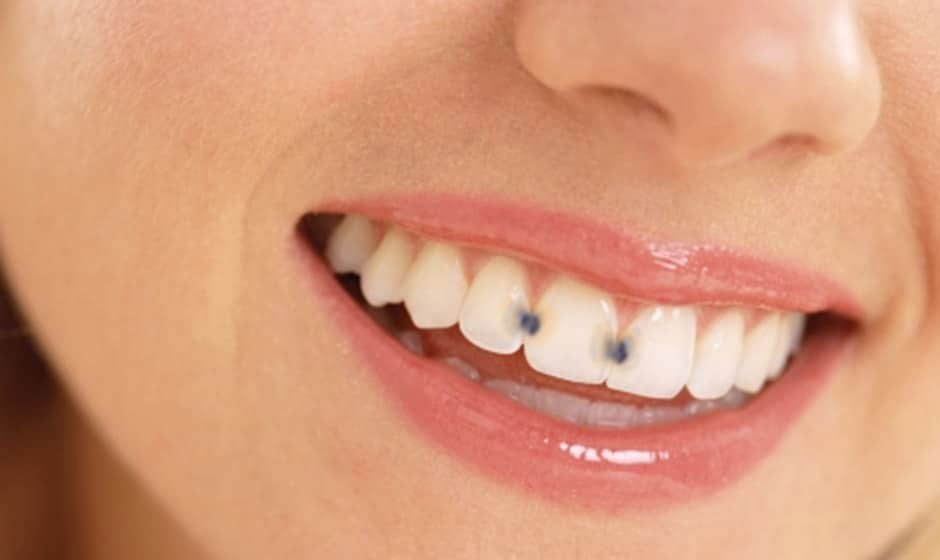Introduction
Discovering a cavity between your teeth can be concerning. Known as an interproximal cavity, it occurs when the enamel is worn away, allowing bacteria to stick to the tooth and cause decay. In this article, we will explore the symptoms, treatment options, and prevention techniques for cavities between teeth.
Symptoms
Identifying a cavity between your teeth can be challenging as it may not exhibit any noticeable symptoms until it reaches a more advanced stage. However, there are a few signs to watch out for:
- Tooth Sensitivity: When the cavity penetrates the enamel and reaches the dentin layer, you may experience sensitivity to sweets and cold substances. This can cause discomfort or pain.
- Discomfort while Chewing: As the cavity progresses, you might feel discomfort or pain when chewing or biting down on food.
- Dental Examination: Regular dental check-ups, which often include bitewing X-rays, can help detect cavities between teeth that are not yet causing symptoms.
Treatment
The appropriate treatment for a cavity between teeth depends on its severity. Your dentist may recommend one of the following procedures.
- Recalcification: If the cavity is caught in its early stages and has not extended deep into the enamel, recalcification is possible. This process involves applying fluoride gel to the affected area to promote remineralization and strengthen the enamel.
- Filling: When the cavity extends more than halfway into the enamel, a filling is necessary. Your dentist will remove the decayed portion of the tooth, and the resulting space will be filled with materials like porcelain, gold, silver, resin, or amalgam. This restores the tooth’s shape and functionality.
- Root Canal: In severe cases where the cavity has progressed deep into the tooth, a root canal treatment may be required to save the tooth. During this procedure, the infected pulp is removed, and the inside of the tooth is thoroughly cleaned and sealed to prevent further decay.
- Crown: If a large filling is needed or there is minimal natural tooth structure remaining, a crown may be recommended. Crowns provide a protective cover for the tooth and can be made from various materials like ceramics, resin, metal alloys, or porcelain. They are often placed after a root canal procedure.
- Extraction: When a cavity is extensive and poses a risk of infection spreading to the jawbone, extraction becomes necessary. Following the tooth extraction, options like dental bridges, partial dentures, or dental implants can be considered to fill the gap.
Prevention
Preventing cavities between teeth requires a comprehensive approach to dental hygiene. Here are some preventive measures:
- Dental Flossing: Since toothbrushes may not effectively clean between teeth, daily flossing is crucial. It helps remove plaque and bacteria from the crevices and gaps, reducing the risk of cavities.
- Balanced Diet: Limit your consumption of sugary foods and beverages, as they contribute to tooth decay. Additionally, reducing between-meal snacking can minimize the frequency of acid attacks on your teeth.
- Oral Hygiene Routine: Brush your teeth twice a day with a fluoride toothpaste, ensuring you cover all surfaces. Regular brushing helps remove plaque and maintain good oral health.
- Dental Examinations: Regular visits to your dentist for check-ups and professional cleanings are essential for early cavity detection and prompt treatment.
- Lifestyle Modifications: If you smoke or consume alcohol, reducing or eliminating these habits can significantly benefit your oral health.
Conclusion
Understanding the causes, symptoms, treatment options, and prevention techniques for cavities between teeth is vital for maintaining good oral health. By adopting a comprehensive dental care routine, including regular flossing, brushing with fluoride tooth paste, and dental check-ups, you can minimize the risk of developing cavities between your teeth. Remember to follow your dentist’s recommendations, such as reducing sugary food and drink intake, to further protect your teeth from decay.
By taking proactive steps and prioritizing oral hygiene, you can maintain a healthy smile and prevent the occurrence of cavities between your teeth. Remember, prevention is key in preserving your dental health and avoiding potential discomfort or complications associated with interproximal cavities.
If you suspect or have any concerns about a cavity between your teeth, it is crucial to consult with your dentist for a thorough examination and appropriate treatment. They can provide personalized advice and guidance based on your specific oral health needs.
Investing time and effort in caring for your teeth will pay off in the long run, ensuring a radiant smile and optimal dental well-being. Stay proactive, maintain a good oral hygiene routine, and prioritize regular dental check-ups to keep your teeth free from cavities and enjoy excellent oral health for years to come.









